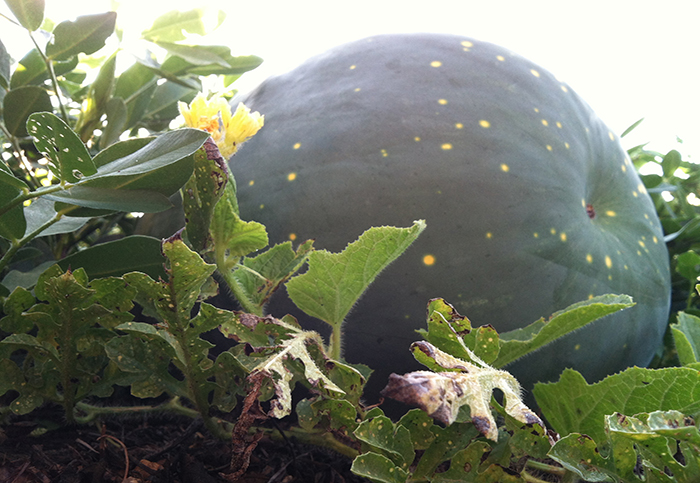Garden Talk

Horticultural Highlight: Moon and Stars Watermelon

In our Horticultural Highlights series, the staff of Duke Gardens writes about plants you’ll find within our 55-acre living collection. This week horticulturist Lindsey Luks features an unusual watermelon for the edible garden.
Botanical name: Citrullus lanatus ‘Moon and Stars’
Common name: 'Moon and Stars' watermelon
Family name: Cucurbitaceae (Squash Family)
Plant type: Summer annual vine
Location in Duke Gardens: Charlotte Brody Discovery Garden
The heat and humidity of summer can be unbearable, but for me they are rewarded with one of my favorite foods, watermelon. Watermelons can grow from USDA hardy zones 3 to 11 but thrive in areas such as the Southeast with long, hot summers. This annual vine can be grown as a ground cover or may be trained on a trellis as a climber, but this depends on the variety one chooses to grow. Watermelon does best in full sun, meaning that for optimal growth and fruiting it needs at least 8 to 10 hours a day. Watermelons come in many sizes, shapes and colors, from striped skin and yellow flesh to deep green skin with bright red flesh, and from palm sized to 100-pound whoppers! One of the most distinct varieties that we have grown in Duke Gardens is the 'Moon and Stars' watermelon.
Every year I am enchanted by this variety of watermelon. The vines grow like any other watermelon but are adorned with speckles of golden yellow on each leaf. When the melons themselves begin to grow, the skin color is deep, dark green, with decorative golden yellow flecks. The flecks range from miniscule to several inches in diameter and resemble the moon in a star filled sky.
It’s a seeded melon, you can have lots of fun with watermelon seed spitting contests, as well as the potential to save seed for planting year to year. Seeds for 'Moon and Stars' watermelon are readily available at many seed distributers. They perform best when direct sown in the garden after all threat of frost has passed. Leave plenty of room in the garden for this vine, as it can spread 10 feet or more.
Along with being beautiful, this plant also offers fruit with sweet, deep red, juicy flesh weighing up to 40 pounds! So when you’re fanning yourself in the heat of summer, just remember that if it weren’t for the heat, we wouldn’t have watermelon.

Photos by Lindsey Luks. Portrait by Clarence Burke.





